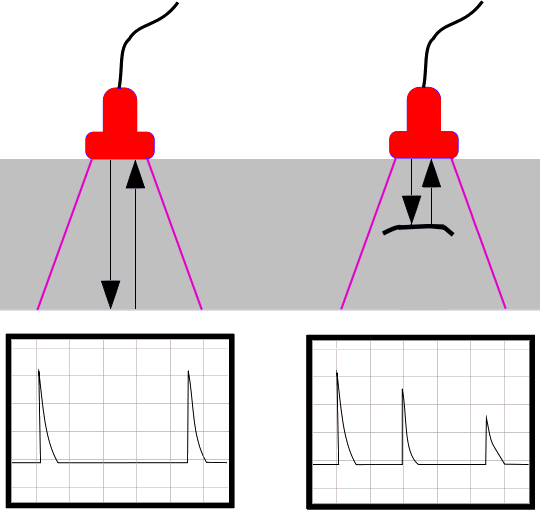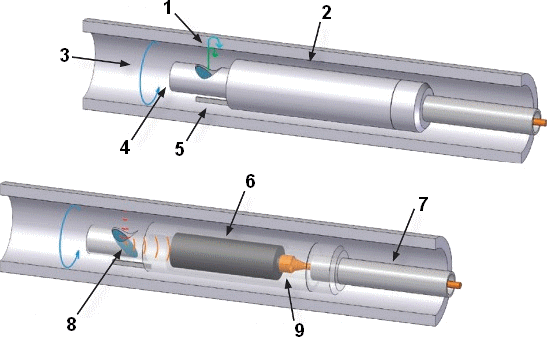Guidelines - Hydrostatic testing
Hydrostatic testing of pressure piping is a mandatory activity before finalization of any new or modified piping system. It is the final check of mechanical integrity of the whole system and should be followed religiously as after this activity the piping system has to be commissioned.
PIPING SYSTEM PREPATATION
FOR HYDRO TESTS
SOME GUIDLINES
- All joints in a test section shall be accessible during tests and shall not be painted, insulated, backfilled or otherwise covered until satisfactory completion of testing in accordance with the requirements in the specification. All equipment and piping to be pressure tested shall be thoroughly cleaned of all dirt, welding slag, construction debris, or other foreign matter.
- All joints in a test section shall be accessible during tests and shall not be painted, insulated, backfilled or otherwise covered until satisfactory completion of testing in accordance with the requirements in the specification. All equipment and piping to be pressure tested shall be thoroughly cleaned of all dirt, welding slag, construction debris, or other foreign matter.
- All vents and other connections which can serve as vents shall be open during filling so that all air is vented prior to applying test pressure to the system. Test vents shall be installed at high points. Drain points for fluid disposal after testing, shall be provided.
- Equipment which is not to be subjected to pressure test shall be either disconnected from the piping or blocked off during the test.
Temporary spades and blanks installed for testing purposes shall be designed to withstand the test pressure without distortion. Presence of spades shall be clearly visible during testing. The recommended practice is to use standard blind flanges as per ASME B16.5 or B16.47 and spades ASME B16.48.
- Spring supports shall be restrained or removed and expansion bellows removed during hydrostatic testing.
Piping which is spring or counterweight supported shall be blocked up temporarily to a degree sufficient to sustain the weight of the test medium. Holding pins shall not be removed from spring supports until testing is completed and the system is drained.
Care shall be taken to avoid overloading any parts of the supporting structures during hydrostatic testing.
- Barriers shall be erected and where practical, Public Address announcements made and access restriction procedures such as permit to work implemented prior to any pressurisation commencing. Under no circumstances should anyone other than an authorised person be allowed within the safety barriers.
- An important aspect is, that materials used in pressure systems comply with all the required tests, all materials are certified and that the engineer has made the right choice of materials. (see main Menu "Societies" numerous ASTM material standards)
- Hydrostatic test has to be performed after all hot works have been completed on a certain piping system. Hot work includes everything related to welding or the post weld heat treatment (PWHT).
- All radiographic and ultrasonic inspections should be carried out before the pressure test is started. Conducting 100% radiography of all the weld joints assure that your weld joints are defect free but can never provide you with the assurance of mechanical integrity of a system. This is also to be noted that radiography / ultrasonic inspection shall also not to be waived off if the pipeline is to be hydrostatically tested.
- The individual system documentation i.e. test pack shall be available prior to any testing and shall include information such as test limits, test pressure, test medium, duration, test blinds, blind flanges, vents and drains.
- The use of marked up PandIds coupled with isolation registers should be utilised to identify the locations of blinds, Valves, vents and drains.
- Testing equipment such as pumps, manifold, pressure and temperature recorders, pressure gauges should be within calibration/certification (as per company procedures) and connected to the lowest convenient connection within the system to ensure best results.
- Control Valves and soft-seal block Valves shall be removed from the piping prior to the test and replaced with pipe spools.
- Check Valves shall have the flap or piston removed for testing, where pressure can not be located on the upstream side of the Valve. The locking device of the flap pivot pin shall be reinstated together with the flap and a new cover gasket shall be installed after completion of the test.
- Piping which is normally open to the atmosphere, such as drains, vents, discharge piping from pressure relieving devices, sewers, and stack downstream of the seal drum, shall not be subjected to the piping test pressure
- Rotating machinery, such as pumps, turbines, and compressors. Machinery lube and seal oil systems which could be impaired by the presence of water, shall not be subjected to the piping test pressure.
- Strainer elements, filter elements, expansion joints, and pressure relieving devices, such as rupture discs and pressure Relief Valves. All locally mounted indicating pressure gauges.
PREPARATION
&
TESTING
- Pressure gauges should be fitted at both low and high point when testing large volume systems.
- The system shall be filled from the lowest available point; all vents and high point connections shall be open during this operation to allow the air in the system to vent off.
- After the system has been completely vented all vents and drains should be plugged or blinded. Verify that Valves are in place and open/closed as required.
- The test is carried out at a pressure 1.5 times higher than the design pressure of a system regardless of the service conditions of a piping system.

HIGH PRESSURE
TESTING
IN PROGRESS
- Maintain pressure for 10 minutes and then gradually increase pressure in steps of one tenth of the test pressure until the test pressure is attained. The recommended practice of a QC inspector is to walk through the whole piping system and check for leaks. Every single length of piping, welds, bolted connections shall be visually examined for any leakage. Duration of this activity varies with the span of piping system. For larger piping system time taken for this activity is enough to clear the hydrostatic test. In case of piping system having smaller span, 1 hour time may be made as standard practice.
- Whenever a leak is found from flanged connection, it is advisable not to perform any tightening before the system pressure is brought down to at least 70%. A leak from a weld joint, piping base metal or any other location which may require hot work shall only be addressed after de-pressurizing the piping under test.
- After any leaks have been repaired the system shall again be pressurised to the test pressure in stages.
- The test should be witnessed and accepted by a third party, client representative or a responsible person within the company and signed as accepted.
- Pressure and ambient temperatures should be recorded throughout the complete test cycle. These charts should form part of the Hydrostatic Test Documentation.
- On completion of the test, the system shall be depressurised by controlled means and all vents opened prior to draining of the system to avoid any vacuum within the system.











